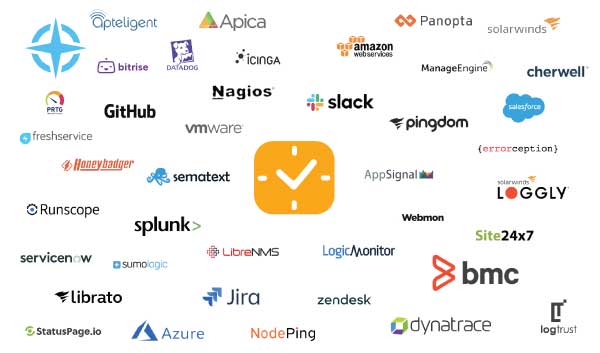What is Internet of Things (IoT) and is your business using it effectively? If not, it could be missing out on opportunities to boost its productivity, increase its revenues and achieve its immediate and long-term goals.
IoT is a system of interconnected devices; these devices can exchange data with one another over a network that requires no human interaction. Many organizations are leveraging IoT devices, aka “smart” or “connected” devices, to keep pace with rivals in a fierce global marketplace.
Additionally, IoT devices are becoming top choices for consumers. From the Amazon Echo hands-free speaker to the Roomba robot vacuum, connected devices are transforming the way consumers connect with the world around them.
Don’t expect the push for IoT devices to slow down any time soon. Technology research firm Gartner estimated 8.4 billion connected devices were in use worldwide last year. Gartner also projects business spending on connected device hardware and applications will reach nearly $3 trillion by 2020.
What Are the Benefits of IoT?
The benefits of IoT are significant. Some of the reasons why organizations are choosing IoT devices include:
- IoT devices make it easy to automate costly, time-consuming and mundane tasks. Smart devices can perform both simple and complex tasks on their own. As such, organizations can deploy IoT devices to automate assorted tasks, leading to increased productivity and efficiency, fewer mistakes and reduced operating costs.
- IoT devices drive improved decision-making. Smart devices provide organizations with relevant, real-time data and insights to help business leaders make informed decisions.
- IoT devices help organizations boost their revenues. In addition to the cost and time savings provided by smart devices, these gadgets can help organizations quickly develop and launch superior products, services and systems.
Best of all, IoT devices foster collaboration among organizations of all sizes and across all industries. The devices enable business professionals to stay in constant contact with one another. Thus, IoT devices may help organizations build collaborative work environments.
What Are the Challenges Associated with IoT?
Like any new idea or technology, IoT is a work in progress. Some of the challenges associated with IoT devices include:
- Data Complexity: Structured and unstructured data is readily available to organizations, yet analyzing this information and transforming it into actionable insights remains an uphill climb.
- Security and Privacy: As the sheer volume of data increases, the threats associated with protecting this information and keeping it safe from cybercriminals are increasing in size, severity and volume.
- Business Buy-In: Educating C-suite leaders and other business personnel about IoT, how IoT devices work, and the benefits associated with smart devices is difficult, particularly for organizations with limited budgets and resources.
IoT is evolving, and business professionals are responsible for keeping pace with it. Failure to do so may cause the aforementioned challenges to put an organization, its customers and its employees at risk. Worst of all, these challenges may go unresolved if an organization fails to prioritize collaboration.
How Can Collaboration Help Organizations Resolve IoT Issues?
When it comes to resolving IoT issues, collaboration is key for many reasons, such as:
- Collaboration helps organizations transform goals into accomplishments. Research shows business professionals who share information and communicate with one another are more likely than others to accomplish everyday business goals. Meanwhile, IoT devices ensure business professionals can keep one another up to date until tasks are completed.
- Collaboration promotes flexibility. Let’s face it – business professionals sometimes come up with the best ideas outside of an office environment. Thanks to IoT devices, business professionals can discuss complex issues from any location, at any time. Therefore, remote workers around the globe can work together to solve complex problems – all without being confined to an office.
- Collaboration simplifies communication. The days of sending a single email or text message to get in touch with a business colleague are over. Now, IoT devices empower business professionals to take advantage of multi-modal communications. The devices ensure business professionals can simultaneously send emails, SMS messages and other notifications to the right people, at the right time, every time. As a result, smart devices help business professionals receive instant notifications that can lead to better, faster results.
- Collaboration reduces the risk of integration problems. Integrating IoT devices across a business should be simple, yet getting all departments on the same page may prove to be overwhelming. Collaboration reduces the potential of integration problems, as it helps business professionals work together to identify and address such issues early in the deployment cycle. This means business professionals in multiple departments can work together to understand the root causes of implementation issues and brainstorm potential solutions. Then, all departments will be able to reap the benefits of IoT devices for an extended period of time.
- Collaboration eliminates guesswork. Even a single missed communication may make it tough for an organization to enjoy the full benefits of IoT. For example, if an IT team member fails to receive a notification about a security flaw, the problem may escalate. If this issue goes unaddressed over the course of minutes, hours or days, it may even lead to an organization-wide breach. Collaboration minimizes the risk of missed notifications, and for good reason. It drives business professionals to work together to achieve common goals, thereby limiting the possibility of downtime, outages and other IT issues.
IoT presents both opportunities and challenges for organizations. How an organization approaches collaboration may dictate its success with IoT implementations.
If an organization prioritizes the development of a collaborative culture, it may be better equipped than others to benefit from IoT. This organization will deploy processes and systems to teach employees about IoT, its benefits and risks and how to optimize the value of IoT devices. Furthermore, the organization can deploy alert escalation and incident management software that empowers IT teams to identify, mitigate and track incidents like never before.
Deploying alert monitoring software offers a great starting point for organizations that are ready to leverage IoT devices. This software helps IT teams establish workflows, monitor data related to downtime, outages and other incidents and much more. It even allows IT teams to set the foundation for collaboration at all levels of an organization by empowering team members to maintain ongoing communications on various platforms.
Take advantage of alert escalation and incident management software. By doing so, your organization can move one step closer to building a collaborative work environment and capitalizing on all IoT has to offer.







